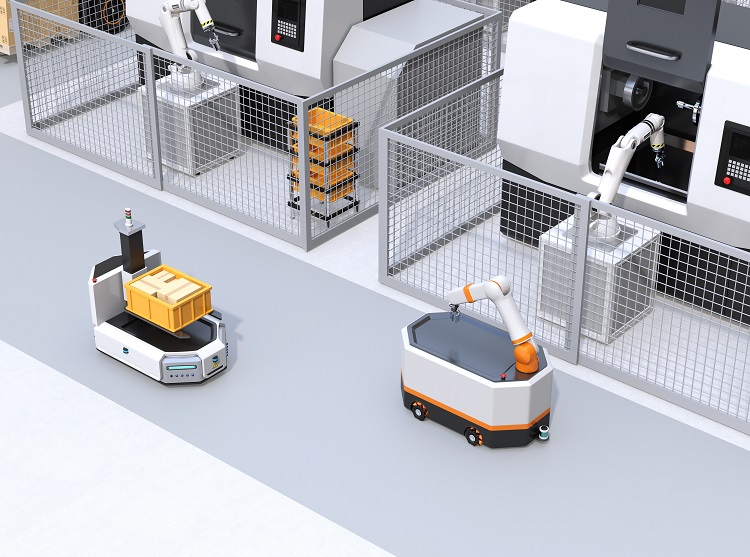Interview with Jay from Clearpath: AMRs for Small Manufacturing Businesses

We interviewed Jay Judkowitz on autonomous guided vehicles and autonomous robots. Jay is the VP of Product, OTTO Motors, a division of Clearpath Robotics. Jay is a veteran product leader with long tenures at software platform companies such as VMware and Google Cloud. Jay spent 21 years in Silicon Valley before moving to Kitchener, Ontario in 2017. He is passionate about how technology can improve people's lives and is excited to be in the autonomous robot space so that we can eliminate dull, dirty, and dangerous work and make manufacturing more cost-effective worldwide.
How are small to midsize manufacturers utilizing AMR technology?
Small and midsize manufacturers tend to focus on automating one task that is particularly troublesome to them. For people in cellular manufacturing, it might be having small AMRs carry work in progress between cells so highly skilled assemblers don’t have to waste time carrying things to the next station. For others, it might be connecting two islands of automation, like taking goods from a palletizer to a stretch wrapper. They often try out one workflow to get familiar with the technology before expanding into a larger deployment.
What is one use case that can save a manufacturer time by using AMRs?
It depends on the manufacturer and what their worst issues are. Referring back to the previous answer, cellular manufacturers tend to use AMRs to transport work in progress because the assemblers are skilled and their pay is relatively high. A small AMR with a cart workload tends to suffice. For other manufacturers, their biggest problem may be to replace forklifts driving heavy packages of finished goods, either because of injuries or inability to hire. In those cases, a larger AMR with attachments like conveyors or lifts to handle the material transfer may be better suited.
How will existing employees work and interact with the AMRs?
This depends on the workflow. In the example of moving materials to and from a person, there is regular interaction between the robots and the people. Employees will call an empty robot through a simple kiosk, load it, and then dispatch it to another location using the kiosk. Those people will often come to see the AMRs as their robotic coworkers. By contrast, when equipment is moved between machines, most of the interaction with robots comes from process engineers who work deeply with the fleet manager to optimize zones and jobs to maximize material flow.
How can a company communicate to their employees the changes that AMRs will bring to their jobs and the value to the company?
I think the big thing to focus on is what people will be able to do once the burden of moving things around is removed. What roles will now be available to people who could not get out of material handling without shutting down the line? Get people excited about working with robots. It’s great technology and a skillset that will help employees in their careers. And don’t forget about safety—there are a lot of preventable injuries that will be avoided with the robots.
Beside the actual AMR, what does a company need to ensure it provides a ROI?
There can be a lot or a little that goes into an AMR deployment. Small robots with integrated lifts moving carts need a lot less than large robots with attachments and factory integration. But, in all cases, you will want to make sure you have proper wi-fi in the facility so you can always communicate with the robots. Also, it’s important to invest in training people how to work with the robots—everything from planning to maintenance. Robots provide the opportunity to rethink your process engineering. They may expose optimizations you never considered or changes you should make to get the most out of them.
An insurance company that cares about you and insuring the things you wish to be insured.
Get a Quote> Find an Agent>

